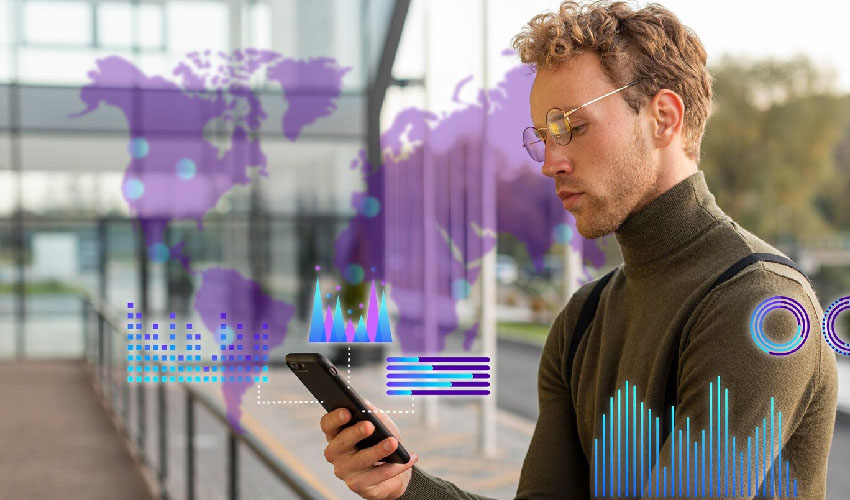Table of Contents
Introduction
A. Definition of Mobile App Analytics
Mobile App Analytics refers to the collection and analysis of data generated by users’ interactions with a mobile application. It provides valuable insights into user behavior, helping app developers make informed decisions to enhance user experience and optimize performance.
B. Importance of Tracking User Behavior
Understanding how users navigate through an app, which features they engage with the most, and the factors influencing retention is vital for improving the overall app experience. Mobile App Analytics empowers developers to make data-driven decisions, ensuring their apps meet users’ evolving needs.
Key Metrics to Track
A. App Downloads
The first step in mobile app analytics is tracking the number of downloads. This metric sets the foundation for understanding the reach of the application and its initial popularity.
B. User Engagement
Analyzing how users interact with the app provides insights into the features that capture their interest. Metrics like time spent in the app and the frequency of use are crucial indicators of engagement.
C. Retention Rates
Retention rates measure the percentage of users who continue to use the app over time. Monitoring retention helps identify factors contributing to user loyalty and areas for improvement.
D. In-App Purchases
For apps with a monetization strategy, tracking in-app purchases is essential. This metric reveals user behavior related to spending habits and the effectiveness of monetization strategies.
Tools for Mobile App Analytics
A. Google Analytics
Google Analytics for Mobile Apps offers a robust set of tools for tracking user interactions. It provides detailed reports on user demographics, in-app behavior, and conversion tracking.
B. Mixpanel
Mixpanel specializes in event-based analytics, allowing developers to track specific user actions within the app. It’s particularly useful for understanding user journeys and optimizing features.
C. Flurry Analytics
Owned by Verizon Media, Flurry Analytics offers insights into user behavior, advertising performance, and app usage trends. Its user-friendly interface makes it suitable for developers of all levels.
D. Appsee
Appsee focuses on visual analytics, providing heatmaps and user session recordings. This tool is valuable for understanding how users navigate through the app and identifying pain points in the user experience.
Setting Up Mobile App Analytics
A. Installing Tracking Codes
Before diving into analytics, developers need to integrate tracking codes into their app. This step is crucial for collecting data on user interactions.
B. Configuring Events and Goals
Defining specific events and goals, such as completing a tutorial or making a purchase, enables developers to track critical user actions. This data is instrumental in assessing the app’s success in meeting its objectives.
Analyzing User Behavior
A. Navigational Patterns
Analyzing how users navigate through the app helps identify popular pathways and potential bottlenecks. This information guides developers in optimizing the app’s structure for a seamless user experience.
B. Popular Features
Identifying the most-used features allows developers to prioritize enhancements and updates. It ensures that the app’s core functionalities align with user preferences.
C. User Demographics
Understanding the demographics of the app’s user base provides insights into the target audience. This information informs marketing strategies and helps tailor the app to specific user preferences.
Benefits of Mobile App Analytics
A. Improved User Experience
By identifying and addressing user pain points, mobile app analytics contribute to a more user-friendly experience. This, in turn, enhances user satisfaction and loyalty.
B. Informed Marketing Strategies
Analytics data empowers marketers to target specific user segments with personalized campaigns. This precision improves the effectiveness of marketing efforts and increases user acquisition.
C. Enhancing App Performance
Continuous analysis allows developers to detect and resolve issues promptly, ensuring optimal app performance. This proactive approach prevents negative user experiences and app abandonment.
Challenges in Mobile App Analytics
A. Privacy Concerns
As data collection becomes more sophisticated, privacy concerns arise. Striking a balance between gathering valuable insights and respecting user privacy is a challenge developers must navigate.
B. Data Accuracy
Ensuring the accuracy of data is crucial for making informed decisions. Technical glitches or inaccuracies can lead to misguided strategies and misinterpretation of user behavior.
C. Interpreting Complex Data Sets
Mobile app analytics generate vast amounts of data. Effectively interpreting this data requires analytical skills and an understanding of how specific metrics align with overall app goals.
Best Practices in Mobile App Analytics
A. Regular Monitoring
Consistent monitoring of analytics data allows developers and marketers to stay informed about user behavior trends. This real-time awareness is essential for adapting strategies promptly.
B. A/B Testing
Implementing A/B testing helps assess the impact of changes or new features. This iterative approach allows developers to refine the app based on user response.
C. User Feedback Integration
Combining quantitative data with qualitative insights from user feedback provides a holistic view of the app’s performance. This dual approach enhances decision-making and user satisfaction.
Future Trends in Mobile App Analytics
A. Predictive Analytics
The integration of predictive analytics enables developers to anticipate user behavior and needs. This proactive approach allows for pre-emptive adjustments to enhance the user experience.
B. Artificial Intelligence Integration
The use of artificial intelligence in mobile app analytics enhances data processing capabilities. AI-driven insights provide deeper, more nuanced understandings of user behavior.
Conclusion
A. Recap of Importance
Mobile App Analytics is the compass that guides developers and marketers through the dynamic landscape of user preferences. The insights gained from analytics are instrumental in shaping user-centric apps.
B. Continuous Evolution of Analytics
As technology evolves, so does the field of mobile app analytics. Developers and marketers must embrace the continual evolution of analytics tools and strategies to stay ahead in the competitive app market.
Thanks for reading our post “Mobile App Analytics: Tracking and Understanding User Behavior”. Please connect with us to know more about Mobile App Analytics.












